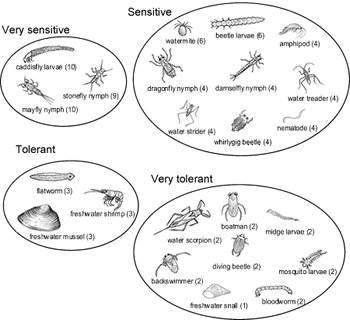
Macro-invertebrates
Based on our background research and preliminary results, we concluded the following information about the water quality of the different locations that we visited. Using a Pollution Tolerance Index, and what macro-invertebrates we found at each location, we learned the following information:
Bird Sanctuary: fair water quality
Lagoon: poor water quality
Lily Pool: good water quality
North Pond: fair water quality
South Pond: good water quality
Labagh Woods: poor water quality
Pickerelweed Pond: fair quality
However, there is uncertainty within our data, as we only sampled different sites of the locations rather than the entirety of the location. If we were to change or modify this project, we would be more consistent while sampling, and focus on one specific site per day, instead of going to multiple different sites(sample at one site during the day, then come back to it in the afternoon, and compare the different times).
A Pollution Tolerance Index, or PTI, is an evaluation that surveys the presence or absence of organisms in order to determine the level of pollution or human disturbance of a stream. The analysis breaks stream invertebrates into 4 groups, and the presence or absence of these organisms is can be used to calculation a “Pollution Tolerance Index” for a stream.


Contributors:
Geneva Ramos, Savannah Kimbrew, Jailene Valenzuela, Khalil Myles, other TEENS in the program.